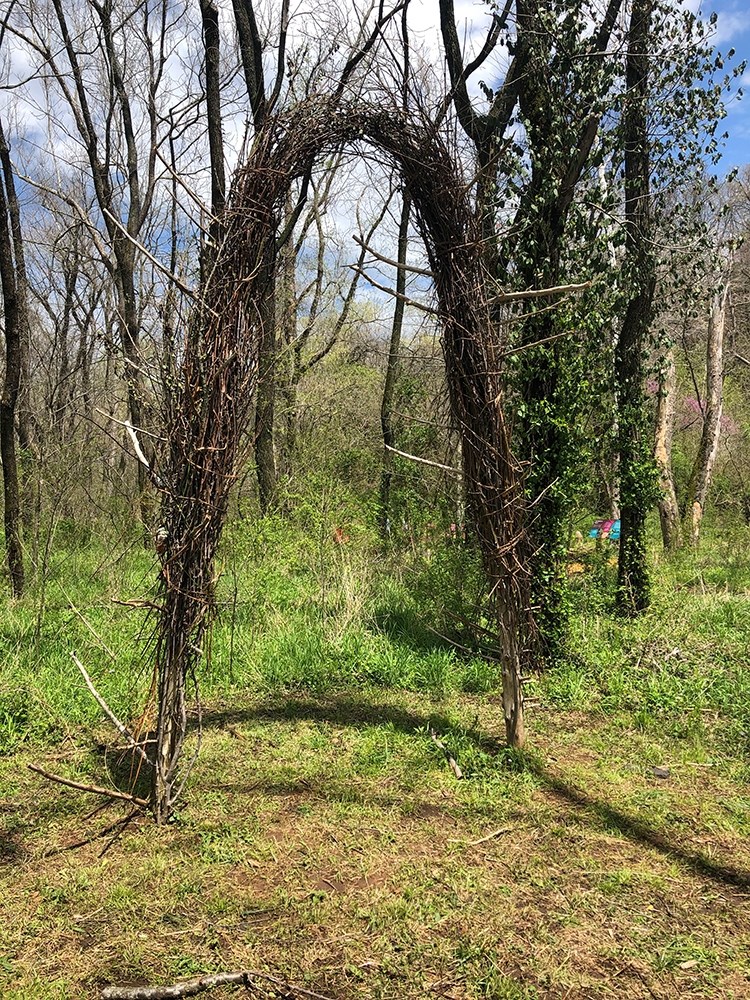School of Art Student Work on Display at Historic Cane Hill With Smithsonian ‘Habitat’ Exhibition
 Eleven site-specific public art projects created by School of Art students are now on display through Nov. 26 at Historic Cane Hill, a current host of the Smithsonian Institute’s Habitat exhibition.
Eleven site-specific public art projects created by School of Art students are now on display through Nov. 26 at Historic Cane Hill, a current host of the Smithsonian Institute’s Habitat exhibition.
Habitat hosts over a dozen exhibit areas along a forested trail system in the historic community of Cane Hill. The outdoor exhibition explores the central idea of “protecting habitats protects life” through the lens of the environment where each exhibit is displayed. Habitat was developed by Smithsonian Gardens and made available by the Smithsonian Institution Traveling Exhibition Service.
Students in Construction Methods, Advanced Sculpture and Graduate SculX Studio courses collaborated with Historic Cane Hill to create work for specific spaces featured alongside Habitat.
A reception celebrating the undergraduate and graduate student artists is from 5-7 p.m., today, Wednesday, May 11. Historic Cane Hill is approximately 20 miles southwest of Fayetteville and six miles from the Oklahoma border. The reception and exhibition is free and open to the public.
“Historic Cane Hill provided a tremendous outlet for students to create site responsive public art projects that can be revisited over the six-month exhibition period in tandem with the Smithsonian Institution’s Habitat exhibition,” said Bethany Springer, associate professor of sculpture and experimental media. “As the students considered time in their decision making process, selecting temporary or permanent materials, surface treatments and design that encourages collaborations with nature, visitors can expect to observe change over the seasons. We are grateful for Historic Cane Hill’s enthusiastic collaboration and the opportunity to showcase School of Art student work in such a meaningful place.”
Students working together and as teams were encouraged to design and build projects in response to the context in which their work would be displayed. As part of their investigations, students researched ecology, etymology, environmental factors, microhabitats, habitat change and protection, archeological surveys, animal architecture, domestic labor, indigenous histories, territorial claim and ownership.
Exhibiting student artists include Marietta Camillieri, Reilly Dickens-Hoffman, David Gonzalez, Jodie Goss, Piper Hart, Abigail Henthorne, Catherine Hudgens, Melissa Loney, Ashley Robbins, Rainie Shelby and Kieran Tverbakk.
Support for these projects has been generously provided by the School of Art in the Fulbright College of Arts and Sciences in collaboration with Historic Cane Hill, Inc. For more information, please contact Bethany Springer at (917) 698-6031 or bspringe@uark.edu, or visit Historic Cane Hill website.
This story also appeared in the University of Arkansas News publication

